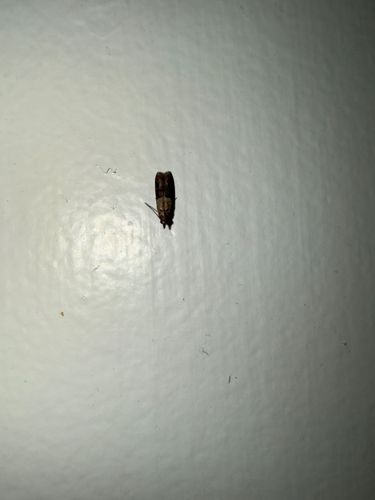Indian meal moth
Scientific Name: Plodia interpunctella
Order & Family: Lepidoptera, Pyralidae
Size: Wingspan typically 10-20 mm (0.4-0.8 inches). Larvae grow up to 12 mm (0.5 inches).

Natural Habitat
Found worldwide, mainly in human dwellings, food storage areas, and grocery stores where dried food products are present.
Diet & Feeding
Larvae feed on a wide variety of dried food products, including grains, cereals, nuts, seeds, dried fruit, pet food, and spices. Adults do not feed.
Behavior Patterns
Adult moths are often seen flying in a zigzag pattern, especially at dusk or in dimly lit areas. Females lay eggs directly on or near food sources. The larvae hatch and begin feeding, often spinning silken webs over the infested food. They typically pupate in a sheltered location away from the food source, sometimes climbing up walls or to ceiling corners.
Risks & Benefits
Potential risks: A significant pest of stored food products, causing contamination and damage to food items. They do not bite or sting humans. Benefits: No known direct benefits to humans or the ecosystem beyond being a food source for some predatory insects or birds in natural settings.
Identified on: 9/20/2025